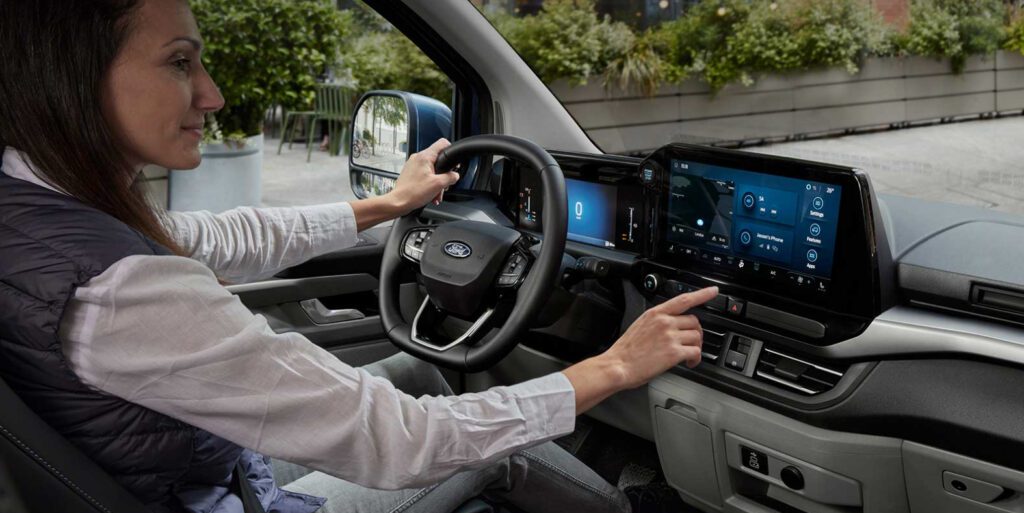
Posted 27th Oct 2025 by Samuel SEO Works
Safety Features Every Modern UK School Minibus Should Have
7 minutes read time
Safety Features Every Modern UK School Minibus Should Have
Transporting children comes with a huge responsibility. Whether it’s a daily school run, a sports fixture, or a trip to the museum, safety is always the top priority. Modern UK school minibuses are designed with this in mind, combining strict regulations with practical features that give staff, parents and pupils confidence every time the engine starts.
Our detailed guide to school minibus legal requirements is a must-read for anyone responsible for operating a school minibus. But beyond the legal requirements, there are a few steps schools can take to go the extra mile safety-wise.
Safety should just be about ticking legal boxes. The right design, equipment and technology can make journeys easier, reduce risks and give peace of mind. Here’s a look at the key safety features every modern UK school minibus should have, and why we think they matter.
Seat Belts Designed for Children
It goes without saying that seat belts are mandatory in the UK, but when it comes to school buses, not all seat belts are created equal. Modern vehicles are fitted with three-point seat belts on every seat, giving the same protection you’d expect in a family car.
For younger children, adjustable or height-sensitive belts are essential. They reduce the risk of belts sitting across the neck or stomach, which can cause injury in a collision. Schools often pair these with booster cushions where appropriate, making sure every child is properly secured for their size.
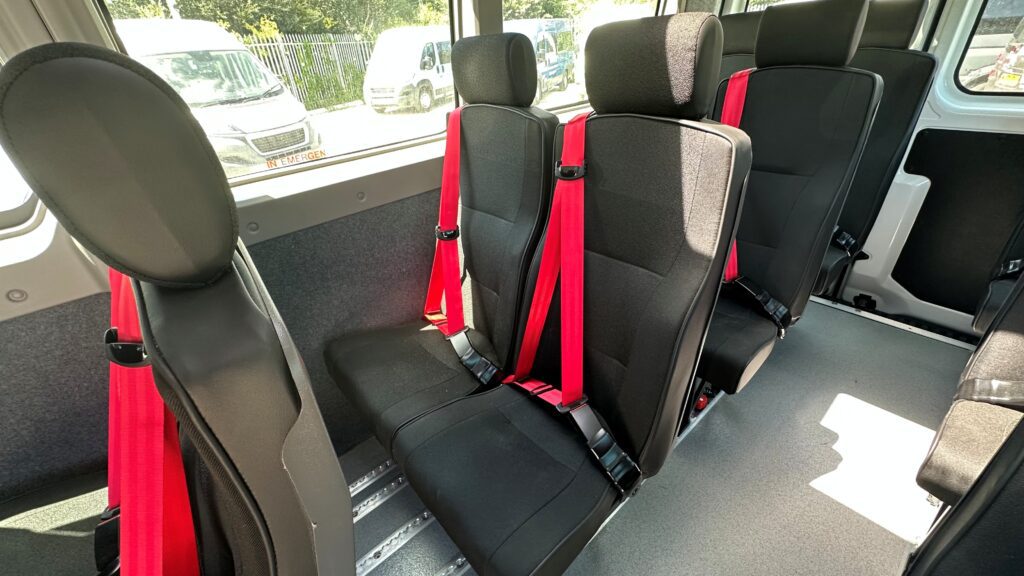
High-Visibility Markings and Step Access
Safely loading and unloading pupils can be one of the trickiest parts of a trip. That’s why today’s minibuses come with high-visibility grab handles, illuminated entry steps, and low floor access where possible. These small details help children climb in and out safely, reducing trip hazards.
Exterior features like reflective strips, hazard lights and clear “School Bus” signage also improve visibility on the road. Other drivers instantly recognise the vehicle’s purpose and are more likely to slow down or give way, especially near schools.
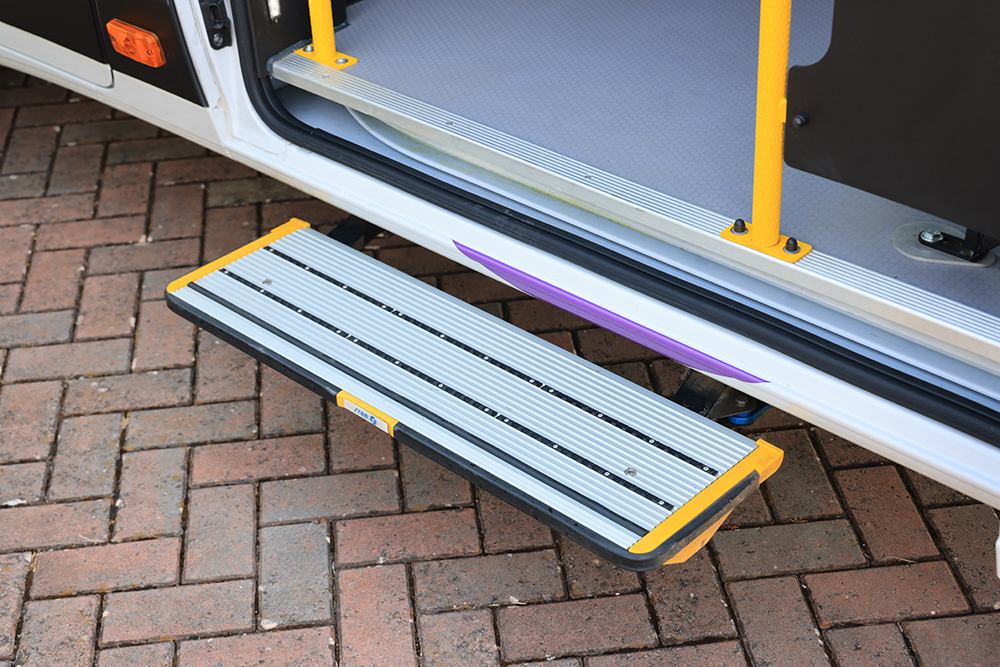
Electronic Stability and Braking Systems
Technology has transformed vehicle safety in recent years, and minibuses have benefitted greatly. Features like Electronic Stability Control (ESC) help drivers maintain control if the vehicle skids or swerves, while Anti-lock Braking Systems (ABS) prevent wheels from locking under hard braking.
These systems are now standard across most modern minibuses, but it’s still worth checking they’re included in any new or leased vehicle. They can make all the difference in an emergency stop, particularly on wet or icy roads where larger vehicles can be harder to steady.
School buses have to run all through the winter months, come rain or shine, and can’t always stick to main roads – so knowing that your minibus is capable of navigating tough conditions is super important.
When it comes to safety, we firmly believe that nothing beats our Minibus Lite. It’s a favourite with schools and colleges just like yours for a reason! Find out how we put Minibus Lite through it’s paces for school minibus safety and testing – did you know that it’s the most extensively tested lightweight school minibus on the market today?
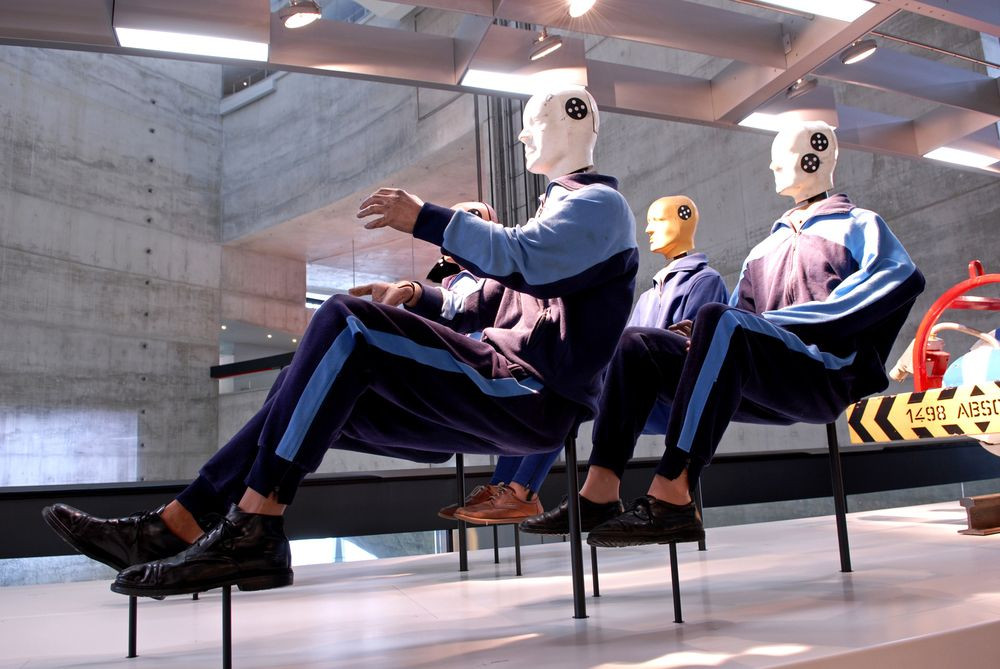
Emergency Exits and Evacuation Planning
Every minibus in the UK is legally required to have well-marked emergency exits, but the best designs go further. Clearly illuminated exit signs (especially for after school trips and those dark winter mornings), wide rear doors and even roof hatches all add extra layers of reassurance.
Schools should also carry out evacuation drills, just as they would with a fire alarm. Familiarising pupils with how to get out quickly, and which adult to follow, can save valuable seconds if the unexpected happens.
Onboard Fire Safety
Minibuses must carry at least one fire extinguisher, but many modern vehicles include multiple extinguishers strategically placed for quick access. Some also feature smoke detectors or automatic cut-offs that prevent overheating.
It’s also worth checking that extinguishers are maintained and replaced before expiry dates. Too often, they sit unused for years, only to fail when they’re needed. A simple annual check can ensure the equipment is ready if called upon.
First Aid Kits and Staff Training
Regulations require a stocked first aid kit, but the real safety feature here is training. A well-prepared driver or accompanying staff member who knows how to handle minor injuries, allergic reactions or fainting is invaluable.
Modern minibuses often store kits in clearly labelled, easy-to-reach compartments. Pairing this with updated staff training ensures small incidents don’t escalate.
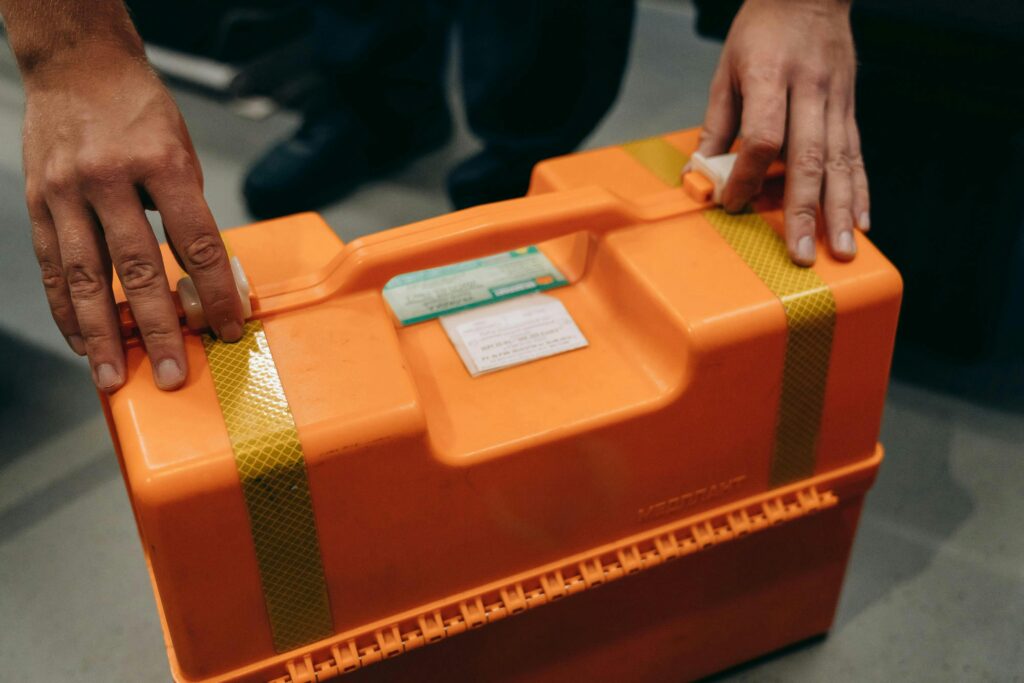
CCTV and GPS Tracking
Increasingly, schools are choosing minibuses fitted with CCTV and dash cam systems. Cameras act as both a safeguarding tool and a security measure, deterring inappropriate behaviour inside the vehicle and providing evidence if needed.
Meanwhile, GPS tracking allows schools and parents to know exactly where the bus is at any time. In the event of a breakdown or traffic delay, the office can provide accurate updates without frantic phone calls.
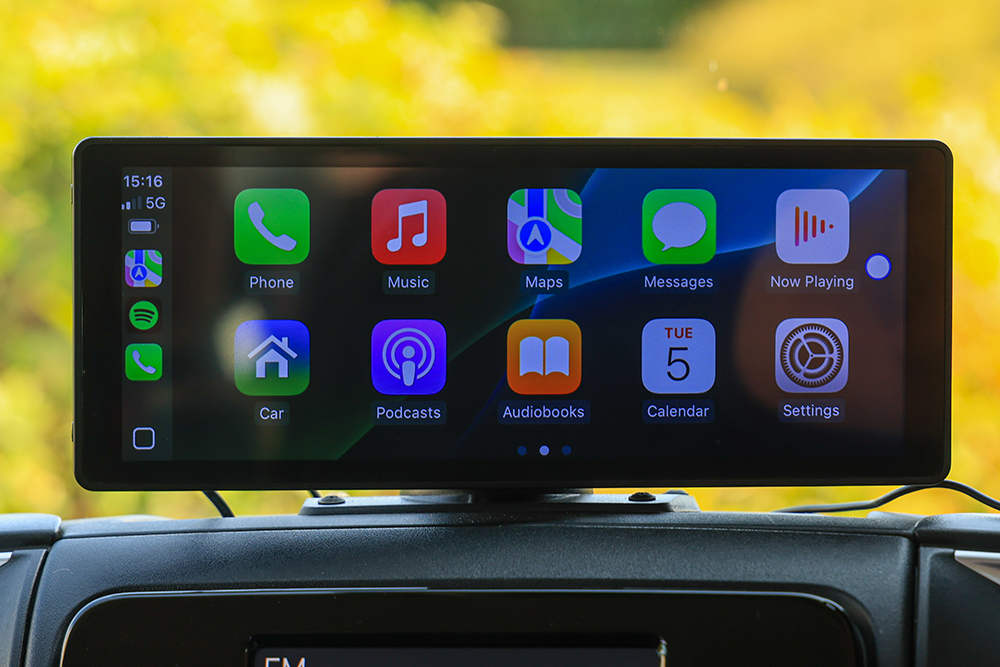
Driver Safety Aids
Features like parking sensors, reversing cameras and blind-spot monitoring can help staff navigate tight school car parks or unfamiliar routes.
Cruise control and lane-departure warnings also reduce fatigue on longer trips. When drivers feel supported by their vehicle, they can focus on the road ahead rather than worrying about manoeuvring a large vehicle on busy roads or in bad weather.
Driver Fatigue and Safe Driving Times
Even the best-equipped minibus is only as safe as the person behind the wheel. Fatigue is one of the leading causes of accidents, and schools have a duty to make sure staff are not put under pressure to drive when tired. So while not strictly safety ‘features’ you’d look for on board a minibus, it’s worth bearing in mind some best practices for driver fatigue.
Current UK guidance recommends that minibus drivers should not exceed two hours of continuous driving without a break, and total driving time should be limited to around nine hours in a day. For school staff who may already be teaching, coaching, or supervising before and after journeys, fatigue can creep in more quickly than expected.
Simple steps make a big difference:
- Schedule rest stops on longer trips, even if the journey seems straightforward.
- Rotate drivers where possible, especially on residential or long-distance journeys.
- Avoid late-night returns after a full school day; tired drivers are less alert and slower to react.
- Plan for cover: schools shouldn’t rely on one or two individuals to do all the driving.
This is also where lighter, easier-to-handle vehicles like the Minibus Lite can help. Because they can be driven on a standard car licence, more staff can share driving duties, reducing the risk of one person taking on too much behind the wheel.

Accessibility Features
Inclusion is an important part of school life, and minibuses need to reflect that. Many modern models are designed with wheelchair access ramps or lifts, alongside secure anchor points for chairs.
This isn’t just a legal requirement for certain schools, it’s also a vital way to ensure every pupil can take part in trips. Proper accessibility features protect both the child and staff, reducing the risks of makeshift lifting or unsafe seating arrangements.
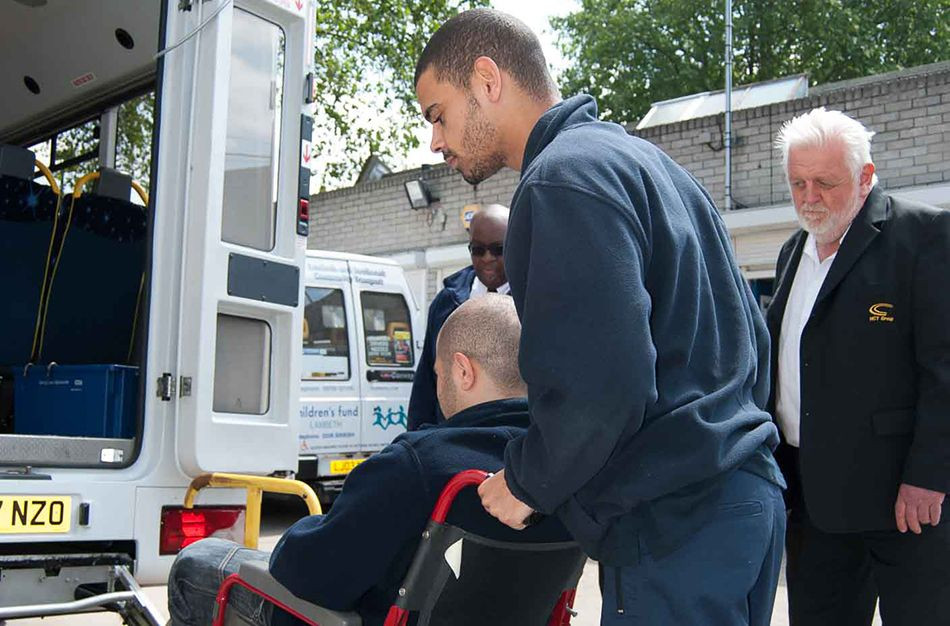
Routine Maintenance and Daily Checks
Even the best safety features only work if the vehicle is properly maintained. Modern minibuses are designed with pre-journey checks in mind, making it easier for staff to confirm that tyres, lights, wipers and fluid levels are all in working order.
Many schools keep a simple checklist in the glove box, signed off before each trip. Not only does this keep pupils safer, but it also provides an audit trail showing the school takes its duty of care seriously.
Going Beyond the Legal Minimum
The Department for Transport and DVSA set clear rules for school minibuses, but schools should always be looking beyond the bare minimum. Safety is not just about compliance, it’s about culture. A culture that prioritises training, regular checks, and choosing vehicles with the best available features will always give pupils and parents greater peace of mind.
From the right seat belts to the latest stability systems, today’s minibuses are safer than ever before. By making smart choices and staying proactive, schools can ensure their vehicles aren’t just road-legal, they’re road-ready.
For a more comprehensive look at the legal requirements for school minibuses here in the UK, read our helpful guide to the legal requirements for school minibuses in the UK.
How We Can Help
Meeting all the safety and legal requirements for a school minibus can feel daunting, but the right vehicle partner makes it simple. At GM School Minibuses, every model we supply is designed with compliance, comfort and safety built in, so you can focus on the pupils, not the paperwork.
Our Minibus Lite range is a popular choice for schools, offering:
- Full safety features as standard including three-point seat belts, ESC, ABS and emergency exits.
- Ease of operation: driveable on a standard car licence, so more staff can share driving duties.
- Accessibility options: from wheelchair ramps to low-floor access, making every journey inclusive.
- Ongoing support: advice on Section 19 permits, maintenance, and daily checks so you stay compliant.
Whether you’re replacing an ageing vehicle or adding to your fleet, our helpful team can help you choose the safest, most cost-effective option for your school. Get in touch today

